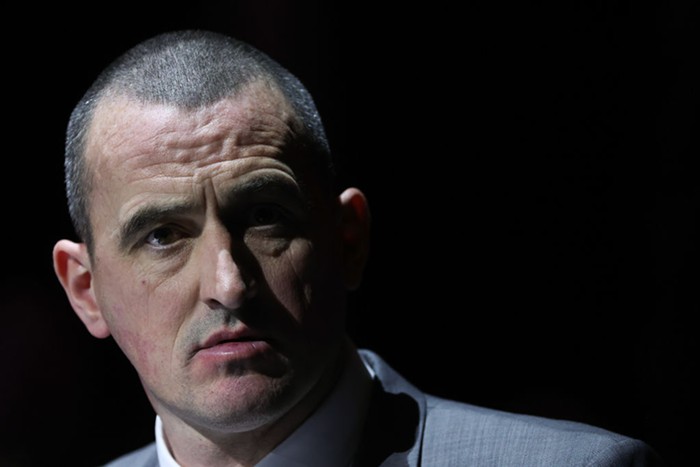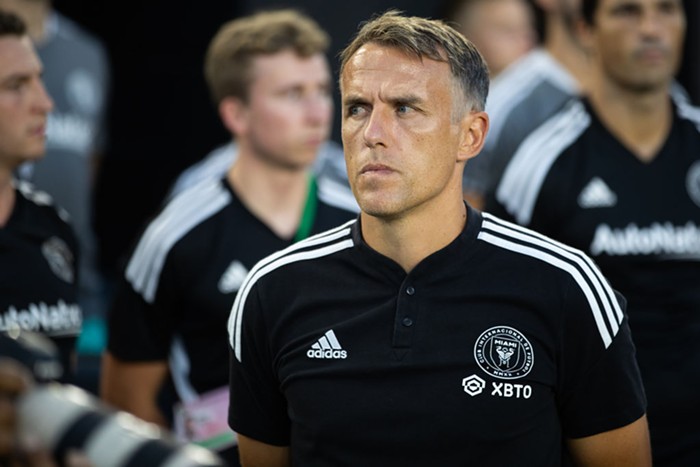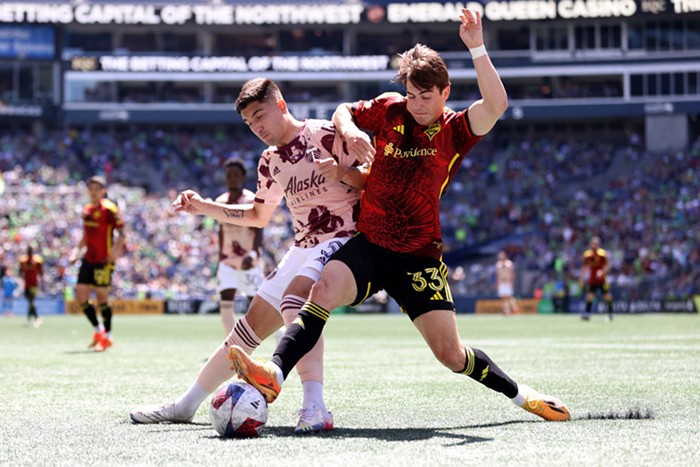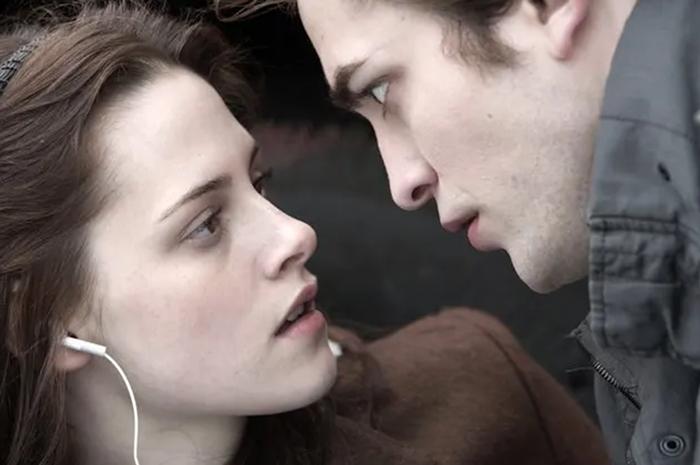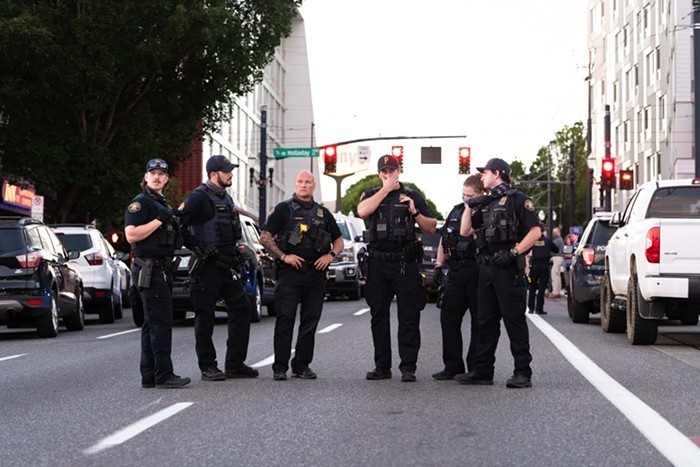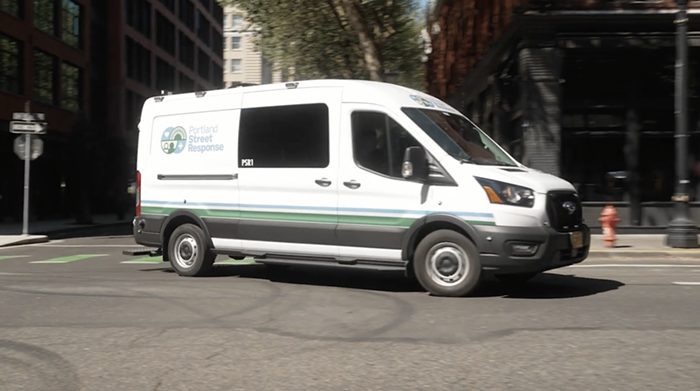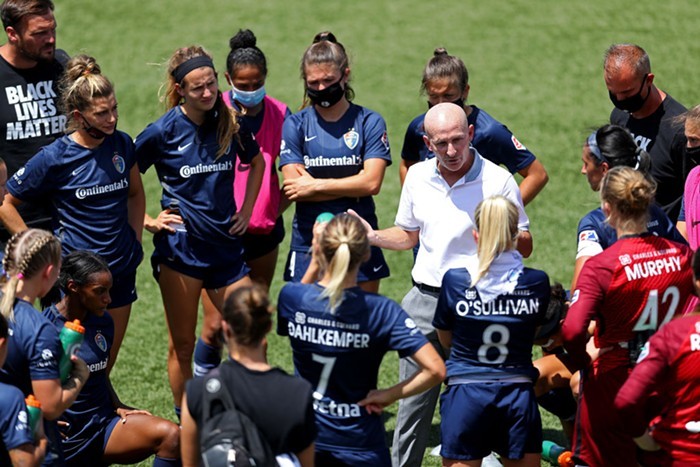You never forget your first DOA match. Or your second. Or your third.
I’m spending my Saturday evening in a gymnasium at the Wattles Boys and Girls Club in Southeast Portland. Tonight’s event—the “Star-Spangled Showdown”—is the second DOA pro wrestling match hosted at the Boys and Girls Club. It’s a significantly larger space than the indie wrestling organization’s previous venue, a dingy industrial garage in Troutdale.
Even in the bigger environment, appreciating DOA—which stands for “Don’t Own Anyone”—requires a functional imagination. (To a certain extent, this can be said about the sport in general.) Amateur wrestling promotions like DOA are attempting to replicate something that is inherently spectacular—namely, the World Wrestling Entertainment, or WWE—on a local level and with only a fraction of the resources. What DOA lacks in glitz and special effects, it makes up for in nuanced storytelling and a more intimate atmosphere.
During the intermission, I talk to two members of the audience—Nick Richard and AJ Brazier—who consider themselves “lifelong wrestling fans,” although tonight marks the first time either of them have been to a DOA match.
“It’s pretty different,” says Richard. “For $15 you can get front-row seats and actually be a part of the action.”
“Yeah, you’re right there,” Brazier adds. “As opposed to going to a WWE event and from a distance being like, 'Oh, that’s so-and-so.’ You actually interact with the fighters, and there’s this level of camaraderie that you can’t get at [a bigger venue].”
The unscripted interactions between athletes and audience members are one of indie pro wrestling’s main selling points. At a larger event, wrestlers are mostly deaf to audience derision; at a DOA match, you can tell a heel (the pro wrestling term for a villain) to go fuck themselves and they’ll probably snap back. There’s a primal satisfaction in having a fighter you hate acknowledge your contempt.
In the row of seats closest to the ring is a little girl who can’t be older than 12. As soon as the first bell rings, she’s up on her feet and red in the face from screaming grade-school insults at the wrestler she wants to lose. Her crude passion is contagious, even prompting a full crowd chant at one point (her signature dis is “that’s not sexy”). She’s as much of a DOA staple as any of the competitors.
“[We call the little girl] 'Jazzman,’ and she probably has the strongest vocal cords of anyone I’ve ever heard,” says Derek Dutton. Dutton—whose wrestling persona is Drexl, The Human Horror Show—has spent a total of 11 years wrestling in and out of the United States, Canada, and South America. In addition to being DOA’s flagship wrestler, Dutton is the organization’s spokesperson and co-promoter.

DOA consistently packs the house, and Dutton says that every audience is a mix of both fresh and familiar faces.
“Every time we start running at a new venue, we always pick up new fans who live in the area,” Dutton says. “But the core DOA fanbase has always kept us going, and has followed us around the city and into other areas.”
DOA isn’t the only indie wrestling promotion in Oregon. West Coast Wrestling Connection, or WCWC—which is based in Salem, and broadcasts weekly on PDX TV—was formed three years before DOA in 2005, and has a dedicated fanbase of its own. There’s also the North Portland promotion BCW, or Blue Collar Wrestling, which was formed in 2010.

Samantha Sutcliffe
But to several people I talk to within the community, DOA strikes the best balance between highly athletic wrestling and inter-wrestler drama, two equally important parts of the pro wrestling equation (because let’s face it—this is just As the World Turns with body slams).
“DOA really started as a much more edgy, hardcore promotion back in our first year,” says Dutton. “But by years two and three we really started finding a great balance of all different styles of wrestling, and we combined that with great storylines that really got the fans emotionally invested in what was going on. Currently at the Boys and Girls Club, we’re still showcasing lots of styles, but in a very family-friendly environment.”
The audience diversity at a DOA event is a testament to just how far-reaching pro wrestling’s appeal is, a sport that is mistakenly—and offensively—believed to only attract those of a lower socioeconomic status. In addition to fanatics like Richard and Brazier, or Jazzman, there are plenty of attendees who seem to only have a dilettantish interest in the sport, but who are nonetheless captivated. And why shouldn’t they be? To quote Dutton, being six to 30 feet from the ring at an independent pro wrestling match can feel like you’re “in your own action movie.”
“Being in a smaller venue, you are right on top of the action, and you really feel like you’re a part of [the match],” says Dutton. “I think that also helps audience members feel emotionally invested in the characters, because it’s not just someone that they see on TV, it’s someone that they see face-to-face, or maybe slap hands with and get a picture. They feel like they know these athletes and they represent their hometown.”
I ask Dutton why indie promotions like DOA are relatively obscure, despite pro wrestling’s immense global popularity. He isn’t sure—but it probably has something to do with TV.
“Thirty years ago, it was all about your local wrestling promotion,” says Dutton. “Portland wrestling was the only thing people in the area knew about for years until WWE—which was then WWF—started syndicating and became a national powerhouse in the ’80s.

“I believe that everything runs in phases and even though WWE will not be going anywhere, I’ve seen big growth not just in the Pacific Northwest, but around the country in the independent promotions,” he continues. “And although they will never reach that national level, I think as time goes on and more people discuss them, these homegrown promotions like DOA will get a larger following of city- and maybe state-wide support.”
Nick Gattman—a Portland-based videographer who has been filming DOA matches for five years—agrees that the monopolistic WWE dwarfs smaller, regional promotions. “Live, local wrestling isn’t even on most wrestling fans’ radars,” he says. “You can even look at WCWC’s TV show as an example—they have somewhere around 7,000 viewers, but they only draw 150 people to their live events.
“I think it’s similar to underground music in a way,” Gattman continues, “where someone who likes mainstream music would also probably like some forms of underground music, but they think they need to go to an arena or a big concert hall to experience it live. They don’t realize it can also exist in basements or coffee shops—it’s a similar disconnect in the wrestling community.”
Growing up, I wasn’t allowed to watch wrestling. Not because it was violent or sexist—which it is—but because it was fake. My pragmatist parents—who charged my psyche with existential dread at age six when they told me “you go nowhere when you die”—couldn’t bear to see their son fall for the Santa Claus myth that constitutes pro wrestling’s heart and soul.

But it’s 2016, and we know that there are elements of wrestling that are very real. For one: These people are actually beating the shit out of each other.
“So much of wrestling is learning how to protect yourself,” says Ethan HD. He’s been wrestling since late 2005, and is the current DOA champion; his imposing stature is belied by an extremely mild-mannered disposition.
“It’s basically stunt work,” HD says. “At wrestling school, you learn all these things—like how to fall, how to roll, and how to minimize impact so you aren’t getting that beat up.

“There are so many things that go into wrestling that most people don’t even pick up on,” he continues. “Bracing yourself for every move is this really complex timing thing. When I first started wrestling, I was like, ‘Okay, but when are we going to get to the moves?’—and it’s like, first you have to learn how not to die.”
It’s easy to imagine that every element of a WWE match is worked—especially if you’re watching it on TV—but at a DOA match, the athleticism is undeniable. HD is dripping with sweat and covered in red impressions from an opponent’s palm strikes.
“It’s weird, because in all the exposure that’s been done on wrestling’s inner-workings, I think people have a better understanding of what is and isn’t real,” says HD. “They may know that if I whip a guy across the ring, there’s probably a little bit of assistance in that, but if I’m being drilled into the mat, people know that’s real and there’s no CGI or anything—so I think in a way, people now appreciate the sport more because they realize how physical it really is.”

HD says that indie pro wrestling’s relative obscurity probably has something to do with the fact that it’s so difficult to advertise, especially against the torrent of content peddled by the WWE on TV and the internet. But people who are successfully lured in quickly realize just how unique the experience can be.
“There’s so much wrestling out there,” HD says, “and there are so many things that you can go out and do on any given night. So it’s tough being like, ‘Okay, sit down and watch this wrestling’—but once you get people in, they figure out that this is really exciting. [DOA is] a hard sell—but once someone is sold on it, it’s pretty much guaranteed that they’ll keep coming back.”
The next DOA Pro Wrestling event is the “Back to School Slam” on Saturday, and Girls Club, 9330 SE Harold, 6 pm, $10. For more information, see doaprowrestling.com.

